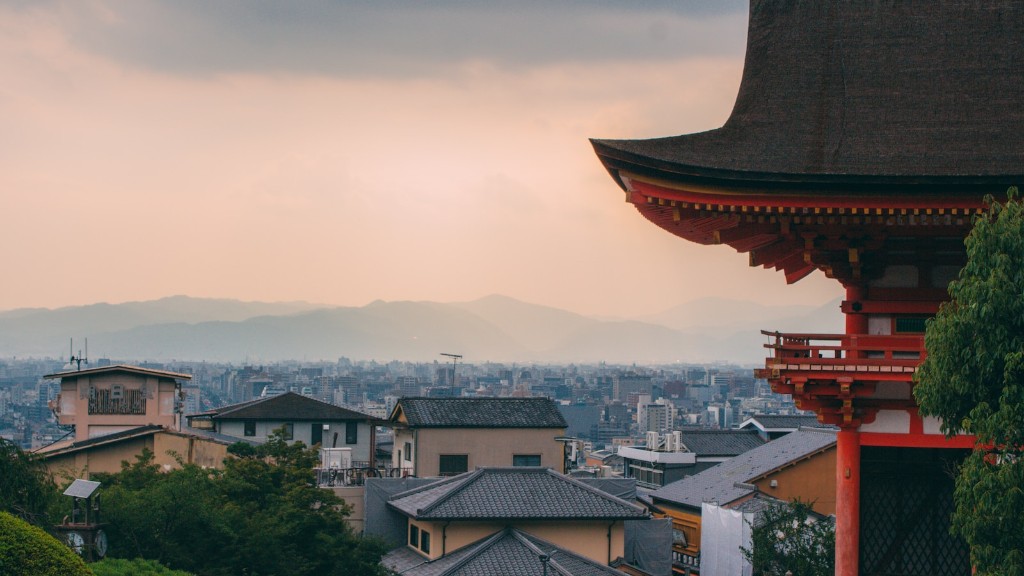Hinduism is widely known as one of the oldest religions in the world, with a history that dates back to before 1000 BCE. It is one of the oldest surviving major world religions, and its beliefs and practices have influenced many other world religions, including Buddhism and Jainism. Hinduism follows a polytheistic faith, and its practice involves many rituals and beliefs that can be traced to its ancient roots. The Hindu texts, such as the Vedas, Upanishads, and Bhagavad Gita, are considered the oldest and most sacred of all the Hindu scriptures.
Hinduism is based on three main principles, namely Brahman, karma, and reincarnation. Brahman is the ultimate reality, meaning that all things within the universe are one and exist within the same ultimate truth. Karma is the belief that one’s actions in life determine the eventual outcomes of one’s life. Reincarnation is the belief that after a person dies, they will be reincarnated into a new body and begin a new life.
The Hindu faith is also characterized by tolerance and a strong emphasis on non-violence. In the Bhagavad Gita, Lord Krishna tells Arjuna, “He who harms no living being and strives constantly for the good of all, is a true Yogi, one who follows the path of Yoga”. According to classical Hinduism, each person’s path to spiritual enlightenment is unique and determined by their individual karma.
Hinduism places an emphasis on charity and service to others, with special emphasis on the treatment of the poor. According to the Bhagavad Gita, “Giving sincerely and truthfully helps purify the mind, leading to peace and contentment”. Hindus also have a strong spiritual connection to the natural environment, with deep reverence given to rivers, trees and other elements of nature. This connection is based on the belief that all living creatures are part of the same divine consciousness.
In recent years, the practice of Hinduism has become more and more popular in many countries, with an increasing number of non-Hindus expressing an interest in exploring its beliefs and teachings. This is largely because Hinduism offers such a wide variety of paths, from strict non-theism to monotheistic worship. The growing popularity of Hinduism can also be attributed to its emphasis on non-violence, charity, and respect for nature. These values are becoming more popular worldwide and appeal to those who seek an alternative to the rigid and restricting aspects of organized religion.
The Role of Caste System in Hinduism
The caste system plays an important role in the everyday life of Hindus. It is a hierarchical system which determines one’s place in society and one’s access to resources within the Hindu faith. The existence of the caste system has been used by some to criticize Hinduism and label it as being oppressive. However, there is much debate over whether the caste system is inherent to Hinduism or if it is an artificial creation developed by human beings over time.
Regardless of whether or not it is inherent to Hinduism, one thing is clear: the caste system has been in existence for centuries, and it is deeply embedded in Hindu society. It is used to determine one’s status and rights, and the division between castes is reflected in many aspects of everyday life, from politics to religion. While some may argue that the caste system is inherently oppressive, many Hindus view it as being necessary for maintaining order in society. In addition, the caste system is not necessarily seen as a “better or worse” system, but rather a necessary tool for providing people with opportunities and resources within the Hindu faith.
The caste system also plays a key role in the spiritual life of many Hindus. It is believed that each person is reborn into the caste that reflects their karma in the past life, and so a higher caste denotes a higher spiritual energy. The caste system is also seen as providing order and structure to society, which allows people to develop spiritually and progress towards enlightenment.
The Impact of Hinduism On Other Faiths
Hinduism has had a huge impact on other religions. Its influence can be seen in Buddhism, Jainism, and Sikhism, as well as in other spiritual and religious traditions. Many of these religions hold beliefs and practices that can be traced back to Hinduism. For example, the idea of reincarnation is shared by Hinduism, Jainism, and Buddhism, with the former two having adopted it from the Hindu faith. Similarly, the idea of karma is shared by all of these religions, with Buddhism and Jainism both adopting the concept from Hinduism.
The influence of Hinduism can also be seen in some of the rituals and festivals that are celebrated by different religions. For example, Diwali, one of the most popular Hindu festivals, is now celebrated by Sikhs, Jains, and Buddhists. Similarly, Holi, the Hindu festival of colors, is celebrated in many other countries, including Nepal and Bangladesh. It is also celebrated by spiritual seekers outside of the Hindu religion.
Furthermore, Hinduism has had an influence on some of the spiritual teachings that have been adopted by other religions, such as the idea of yogic practices and meditation. Practices such as ‘yoga’ and ‘pranayama’, which are closely associated with Hinduism, are now practiced by many people in different countries, regardless of religion or faith. Similarly, the idea of ‘ahimsa’, or non-violence, has been adopted by many other religions, such as Buddhism and Jainism.
The Link Between Hinduism and Nationalism
The link between Hinduism and nationalism generates a great deal of debate and controversy. On one hand, Hinduism is viewed as a religion of peace, tolerance and understanding, where all people are embraced, regardless of their religious beliefs or cultural heritage. On the other hand, there is a view that Hinduism is a religion that is closely linked to nationalistic pride and the idea of a “Hindu nation”. This view is often held by Hindu religious and political leaders who view Hinduism as the source and justification of nationalism, and who use its symbols, texts and beliefs to promote their own political agenda.
In recent years, Hindu nationalism has become increasingly visible in many parts of India. This is evidenced by the rise of Hindu-oriented political parties, increased public displays of Hindu symbols and images, and the emergence of Hindutva (Hindu nationalism) as an official political ideology. Some view these developments as positive, believing that they will help to protect the rights of Hindus and promote religious harmony and peace in India. Others are concerned that they will lead to an atmosphere of intolerance and bigotry, and further divide Hindu communities which have already been negatively impacted by caste discrimination.
In conclusion, it is clear that Hinduism is one of the oldest religions in the world and is deeply rooted in Indian culture and society. It has had an enormous impact on other faiths, both spiritually and culturally, and has a strong connection to nationalism. Despite diverse opinions concerning Hinduism and its relationship to nationalism, one thing is certain: Hinduism will continue to remain an important part of India’s spiritual identity for many years to come.
The Role of Women in Hinduism
The role of women in Hinduism is a strongly debated issue. Some argue that women are treated as second-class citizens in the Hindu faith, and that their role is limited to the home. Others view the status of women in Hinduism positively, and see Hinduism as a religion which offers women a great degree of freedom and autonomy.
In ancient Hindu texts, women are respected and lauded for their courage and strength. For example, women like Sita, the wife of Lord Rama, have been praised for their devotion and self-sacrifice. Similarly, warriors like Meera and Goddesses like Durga are celebrated in Hindu texts and practices. The importance of female energy and symbols such as Shakti is also recognized in Hinduism, with many worship rituals and practices revolving around the veneration of female deities.
Despite these positive depictions of women in Hinduism, there is still the issue of the traditional roles that women are expected to fulfill. In many parts of India, women are still expected to perform domestic duties such as cooking and cleaning, or remain engaged in child bearing and child-rearing duties. This is largely due to the traditional view of women as being inferior to men and having limited rights and opportunities in society.
However, in recent years, there has been an increasing trend towards educating women, giving them greater rights, and encouraging them to seek greater autonomy and independence. This is reflected in the increasing number of women in positions of power in India, with women now occupying some of the highest positions in government and industry. This is an encouraging development which suggests that the role of women in Hinduism is evolving and progressing in a positive direction.
The Relationship Between Hinduism and Hinduism-Based Arts and Crafts
The relationship between Hinduism and art and craft has a long and complex history. Hinduism is closely associated with the art of sculpture and painting, as well as the production of temples, idols and other religious artifacts. The Hindu reverence for art, particularly fine art, has been an important part of the Hindu faith since ancient times.
Hindu art is characterized by a wide variety of style and meaning, and is strongly influenced by religious and spiritual beliefs and practices. Many Hindus believe that art has a power to transport the viewer to a higher level of understanding and experience. Statues of Rama and Sita, for example, are believed to be an expression of divine love and are often venerated as deities in their own right. Similarly, idols of Ganesha or Kali are thought to be embodiments of the divine, and are treated with reverence and worship.
Hinduism-based art and craft is also closely linked to the idea of Svadharma, or one’s own duty. This is the idea that each person has a unique path to spiritual enlightenment, and that art can help them achieve this. Art is seen as an expression of one’s inner journey, and can provide them with a platform to explore their spiritual beliefs and experiences. For this reason, Hinduism-based art and craft is considered to be an important part of a person’s spiritual growth and development.
In conclusion, it is clear that the relationship between Hinduism and art and craft is an important one. Hindu-based art and craft provides an opportunity for people to explore their faith and beliefs, and provides an expression of their inner journey. This is an important part of Hinduism, and is deeply embedded in the practice and culture of Hinduism.

